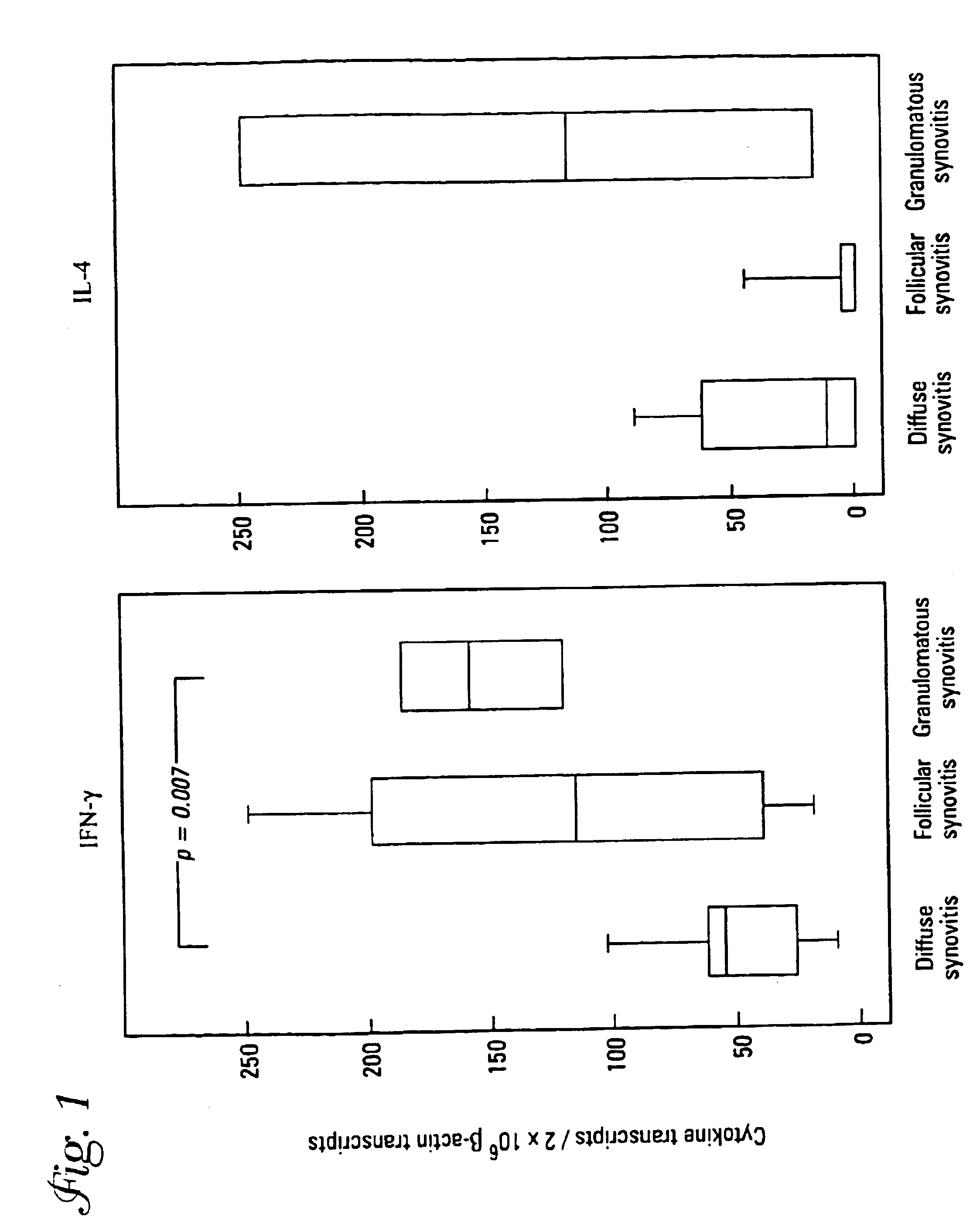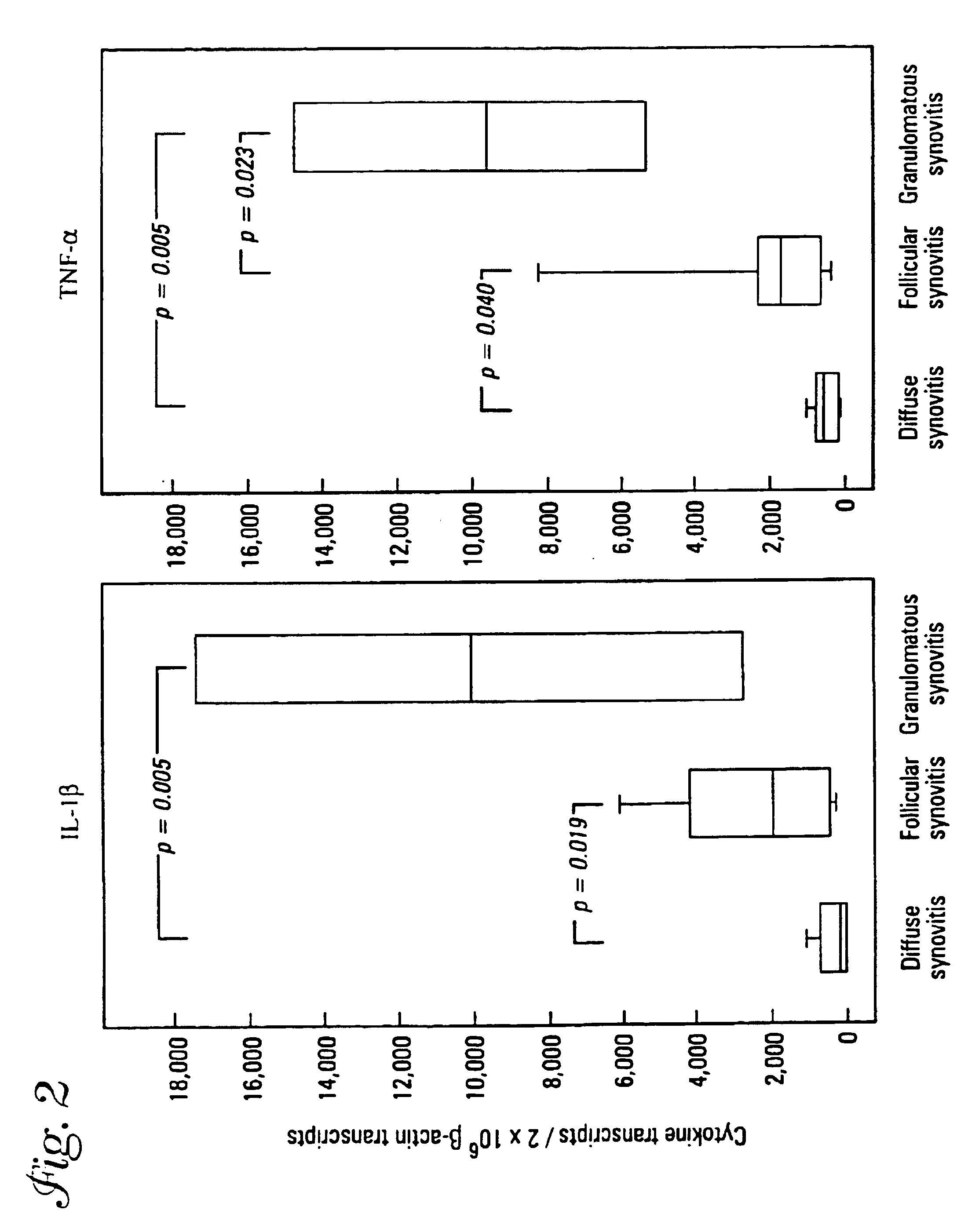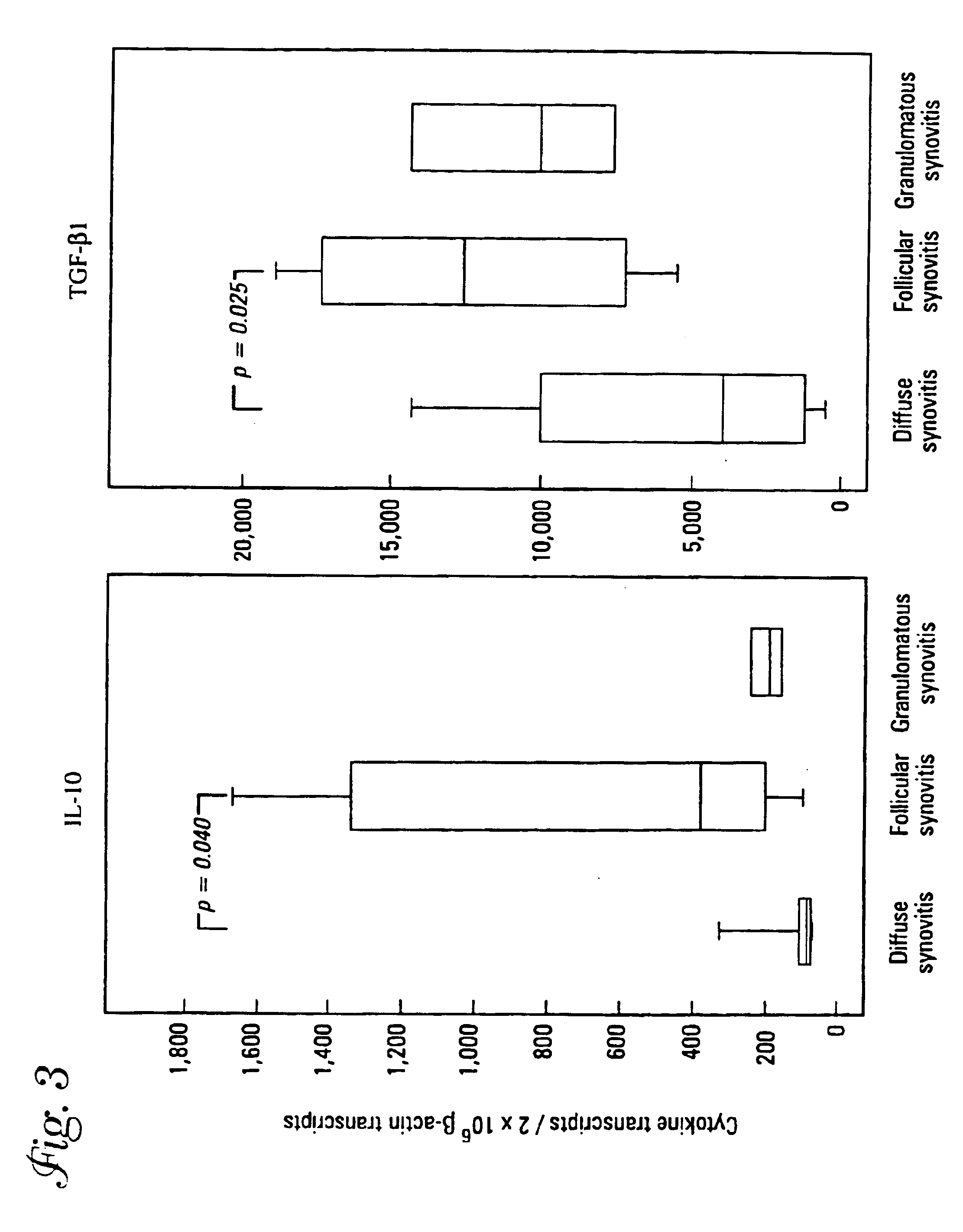Methods and materials for evaluating rheumatoid arthritis
a rheumatoid arthritis and rheumatoid arthritis technology, applied in the field of rheumatoid arthritis evaluating methods and materials, can solve the problems of chronic pain and irreversible damage of tendons, ligaments, joints, poses therapeutic challenges that cannot be easily overcome by joint replacement, and the pathological findings are usually not helpful
- Summary
- Abstract
- Description
- Claims
- Application Information
AI Technical Summary
Benefits of technology
Problems solved by technology
Method used
Image
Examples
example 1
Three Distinct Histopathological Patterns in Rheumatoid Synovitis
[0042]The pattern of cytokines produced in the rheumatoid synovium was found to be predictive of the morphological appearance of the disease. Specifically, rheumatoid synovitis was found to be a heterogeneous entity with three distinct histologically defined phenotypes. The phenotypic heterogeneity correlated to a specific combination of T-cell- and macrophage-derived cytokines, raising the possibility that several pathomechanisms may cause an RA-like syndrome.
1. Study Population
[0043]Fresh synovial tissue was obtained from 21 consecutive patients with active RA who fulfilled the American College of Rheumatology 1987 revised criteria for RA (Arnett, et al., Arthritis Rheum, pp. 31:315-324 (1988)) and who underwent joint surgery.
2. Histopathological Evaluations
[0044]Hematoxylin and eosin sections of the tissue samples were analyzed for the organizational structure of the inflammatory infiltrate with particular attention...
example 2
T-cell Derived Cytokines in Distinct Types of Rheumatoid Synovitis
[0054]A semiquantitative PCR / liquid hybridization assay was used to detect low concentrations of cytokines in tissue extracts. To directly address the question of whether a correlation exists between the tissue organization of inflammatory cells and cytokine production, the three histomorphologically defined types of synovitis were compared for in situ transcription of the IFN-γ and IL-4 genes. To correct for variations in the amount of tissue used for RNA extraction, all cDNAs were adjusted to a concentration equivalent to 2×106 copies of the β-actin gene product (FIG. 1). IFN-γ mRNA production was a characteristic finding for granulomatous synovitis. Tissues with follicular synovitis contained variable concentrations of IFN-γ mRNA copies (median of 114 copies) whereas the lowest levels were found in extracts derived from material with diffuse synovitis (median of 55 copies). As demonstrated by two-color immunohistoc...
example 3
Differences in Macrophage Activation Distinguish the Three Variants of Rheumatoid Synovitis
[0057]To address the question of whether the different organizational forms of rheumatoid synovitis are associated with differences in the activation of synovial macrophages, the number of IL-1β and TNF-α transcripts were determined in the tissue extracts. IL-1β and TNF-α specific sequences were detected in all samples. As shown in FIG. 2, concentrations of in situ transcribed IL-1β varied extensively, ranging from 103 to 17,400 copies per 2×106 β-actin sequences. Low copy numbers were frequently found in specimens with diffuse synovitis (median of 270 copies), and intermediate levels of IL-1β transcription were typical for follicular synovitis (median of 2038 copies). This difference was statistically significant (P=0.019). Tissue sections with granuloma formation had the highest rate of IL-1β mRNA synthesis (median of 10,044 copies), and could be clearly distinguished (P=0.005) from tissues ...
PUM
| Property | Measurement | Unit |
|---|---|---|
| pH | aaaaa | aaaaa |
| frequency | aaaaa | aaaaa |
| binding affinity | aaaaa | aaaaa |
Abstract
Description
Claims
Application Information
 Login to View More
Login to View More - R&D
- Intellectual Property
- Life Sciences
- Materials
- Tech Scout
- Unparalleled Data Quality
- Higher Quality Content
- 60% Fewer Hallucinations
Browse by: Latest US Patents, China's latest patents, Technical Efficacy Thesaurus, Application Domain, Technology Topic, Popular Technical Reports.
© 2025 PatSnap. All rights reserved.Legal|Privacy policy|Modern Slavery Act Transparency Statement|Sitemap|About US| Contact US: help@patsnap.com



